Prolonged Grief Disorder After Pet Loss: Key Signs and Criteria
In a previous article, we explored what Prolonged Grief Disorder (PGD) is and how it differs from other mental health conditions. In this article, we look at the key signs and diagnostic criteria for Prolonged Grief Disorder after pet loss.
Every loss is unique, but when the death of a pet leaves you unable to function months later, you might be experiencing something more than expected grief. Mental health professionals use specific criteria to identify Prolonged Grief Disorder (PGD). Only a licensed professional can diagnose it, but understanding the symptoms of Prolonged Grief Disorder can be a first step toward getting the support you need.
The Core Event in Prolonged Grief Disorder: Bereavement
PGD begins with a bereavement—the loss of someone significant. For many people, the death of a pet fits this definition fully.
Primary PGD Symptom: Separation Distress
Daily yearning, longing, or craving for your pet
Intense physical or emotional pain caused by their absence
Additional Symptoms of Prolonged Grief Disorder
(Five or more, present daily or to a disabling degree):
Feeling like a part of you has died
Difficulty accepting the loss
Avoiding reminders of the loss
Inability to trust others
Bitterness or anger about the loss
Difficulty moving on
Emotional numbness
Feeling life is empty or meaningless
Feeling stunned or shocked
Timing and Impact of PGD Symptoms
DSM-5-TR (2022): At least 12 months since the loss in adults
ICD-11: At least 6 months since the loss in adults
Symptoms must significantly disrupt social, occupational, or personal life and cannot be better explained by depression, anxiety, or PTSD.
DSM vs. ICD-11 – What’s the Difference?
The DSM-5-TR is widely used in the United States and Canada to provide detailed mental health diagnostic criteria. The ICD-11, developed by the World Health Organization, is used worldwide and often applies broader, more flexible definitions. For Prolonged Grief Disorder after pet loss, the DSM-5-TR requires symptoms to last 12+ months after the loss in adults, whereas the ICD-11 allows diagnosis at 6+ months.
Understand Your Grief Better
Take our Prolonged Grief Disorder Interactive Questionnaire to see if your grief patterns align with PGD. It’s quick, private, and may help you decide whether to seek professional support. This questionnaire was developed by Wendy G. Lichtenthal, Ph.D., Holly G. Prigerson, Ph.D. (Weill Cornell Medical College), Jiehui Xu, M.S., and Paul K. Maciejewski, Ph.D.
How Euthabag Supports Healing After Pet Loss
Euthabag is not a licensed mental health professional and cannot diagnose PGD. Our goal is to support grieving pet owners with clear, compassionate information about Prolonged Grief Disorder after pet loss and the many ways grief can show up.
We also help families create personalized end-of-life rituals for pets—a meaningful way to honor your companion and support your healing. Writing a message on your pet’s Euthabag can be part of that ritual, offering comfort and reminding you that you are still accompanying them on the next part of their journey, caring for them as you always have.


